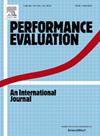Enabling grant-free multiple access through Successive Interference Cancellation
IF 0.8
4区 计算机科学
Q4 COMPUTER SCIENCE, HARDWARE & ARCHITECTURE
引用次数: 0
Abstract
Internet of Things (IoT) is stirring a surge of interest in effective methods for sharing communication channels, with nodes transmitting sporadic, short messages. These messages are often related to control systems that collect sensor data to drive process actuation, such as in industries, autonomous vehicles, and environmental control. Traditional approaches that dominate wireless and cellular communications prove most effective when dealing with a limited number of concurrently active nodes, sending relatively large volumes of data. We address a different scenario where numerous nodes generate and transmit short messages according to non-periodic schedules. In such cases, random multiple access becomes the typical approach for sharing the communication channel. We propose a general modeling framework that enables the investigation of the impact of Successive Interference Cancellation (SIC) on two of the main random access paradigms, namely Slotted ALOHA (SA) and Carrier-Sense Multiple Access (CSMA). The key varying parameter is the target Signal to Interference plus Noise Ratio (SINR) at the receiver, directly tied to the spectral efficiency of the adopted coding and modulation scheme. Two different regimes are highlighted that bring the system to work at relative maxima of the sum-rate. We further investigate the impact of different transmission power settings and imperfect interference cancellation. Leveraging on the insight gained in the saturated node scenario, an adaptive algorithm is defined for the dynamic case, where the number of backlogged nodes varies over time. The numerical results provide evidence of a significant potential for grant-free multiple access, calling for practical algorithms to translate this promise into feasible realizations.
通过连续干扰消除实现免授权多路访问
物联网(IoT)正在激起人们对共享通信渠道的有效方法的兴趣,节点发送零星的短消息。这些信息通常与收集传感器数据以驱动过程驱动的控制系统相关,例如在工业、自动驾驶汽车和环境控制中。事实证明,在处理并发活动节点数量有限、发送相对大量数据的情况下,主导无线和蜂窝通信的传统方法是最有效的。我们解决了一个不同的场景,其中许多节点根据非周期性计划生成和传输短消息。在这种情况下,随机多址成为共享通信信道的典型方法。我们提出了一个通用的建模框架,可以研究连续干扰抵消(SIC)对两种主要随机接入范式的影响,即开槽ALOHA (SA)和载波感知多址(CSMA)。关键的变化参数是接收机的目标信噪比(SINR),它直接关系到所采用的编码和调制方案的频谱效率。强调了两种不同的制度,使该制度以相对最大的总和费率工作。我们进一步研究了不同发射功率设置和不完全干扰消除的影响。利用在饱和节点场景中获得的洞察力,为动态情况定义了自适应算法,其中积压节点的数量随时间而变化。数值结果证明了免授权多址的巨大潜力,需要实用的算法将这一承诺转化为可行的实现。
本文章由计算机程序翻译,如有差异,请以英文原文为准。
求助全文
约1分钟内获得全文
求助全文
来源期刊

Performance Evaluation
工程技术-计算机:理论方法
CiteScore
3.10
自引率
0.00%
发文量
20
审稿时长
24 days
期刊介绍:
Performance Evaluation functions as a leading journal in the area of modeling, measurement, and evaluation of performance aspects of computing and communication systems. As such, it aims to present a balanced and complete view of the entire Performance Evaluation profession. Hence, the journal is interested in papers that focus on one or more of the following dimensions:
-Define new performance evaluation tools, including measurement and monitoring tools as well as modeling and analytic techniques
-Provide new insights into the performance of computing and communication systems
-Introduce new application areas where performance evaluation tools can play an important role and creative new uses for performance evaluation tools.
More specifically, common application areas of interest include the performance of:
-Resource allocation and control methods and algorithms (e.g. routing and flow control in networks, bandwidth allocation, processor scheduling, memory management)
-System architecture, design and implementation
-Cognitive radio
-VANETs
-Social networks and media
-Energy efficient ICT
-Energy harvesting
-Data centers
-Data centric networks
-System reliability
-System tuning and capacity planning
-Wireless and sensor networks
-Autonomic and self-organizing systems
-Embedded systems
-Network science
 求助内容:
求助内容: 应助结果提醒方式:
应助结果提醒方式:


